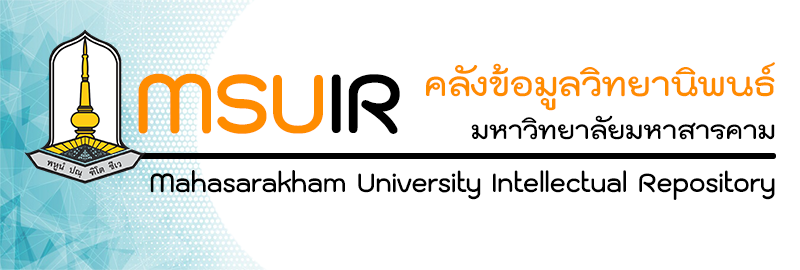Please use this identifier to cite or link to this item:
http://202.28.34.124/dspace/handle123456789/2648Full metadata record
| DC Field | Value | Language |
|---|---|---|
| dc.contributor | Wipavee Panyathikul | en |
| dc.contributor | วิภาวี ปัญญาธิกุล | th |
| dc.contributor.advisor | Somkiet Poopatwiboon | en |
| dc.contributor.advisor | สมเกียรติ ภู่พัฒน์วิบูลย์ | th |
| dc.contributor.other | Mahasarakham University | en |
| dc.date.accessioned | 2025-05-07T10:01:04Z | - |
| dc.date.available | 2025-05-07T10:01:04Z | - |
| dc.date.created | 2024 | |
| dc.date.issued | 24/7/2024 | |
| dc.identifier.uri | http://202.28.34.124/dspace/handle123456789/2648 | - |
| dc.description.abstract | This quasi-experimental study investigated the effect of multimodal teaching on EFL secondary learners’ pronunciation. Moreover, their perception regarding the implementation of multimodal teaching was also explored. Selected from an intact class, the participants were 20 eight graders receiving a teaching method based on the analytic-linguistic approach through audiovisual media combined with hand gestures. The English pronunciation pretest and posttest were administered to collect the data before and after the treatment, which lasted 6 weeks. In addition, a perception questionnaire and a semi-structured interview were used to collect data pertaining to the participants’ perception regarding the multimodal teaching method. The quantitative data were analyzed using descriptive and inferential statistics, including means, standard deviations, dependent and independent sample t-tests. The qualitative data were analyzed using thematic analysis. The results demonstrated that multimodal teaching utilizing audiovisual media combined with hand gestures significantly improved the participants’ pronunciation. Moreover, the participants showed their perceptions about multimodal teaching at very high level. They perceived the benefits of multimodal teaching with regard to positive learning environment, emotional and functional benefits, and instructional advantages. In conclusion, this study suggests the positive outcomes of implementing multimodal teaching in improving EFL secondary learners’ pronunciation. Finally, pedagogical implications and recommendations for future research are provided. | en |
| dc.description.abstract | - | th |
| dc.language.iso | en | |
| dc.publisher | Mahasarakham University | |
| dc.rights | Mahasarakham University | |
| dc.subject | Multimodal teaching | en |
| dc.subject | pronunciation | en |
| dc.subject | audiovisual media | en |
| dc.subject | gestures | en |
| dc.subject | explicit phonetic training | en |
| dc.subject | multimedia learning theory | en |
| dc.subject | EFL secondary learners | en |
| dc.subject.classification | Arts and Humanities | en |
| dc.subject.classification | Education | en |
| dc.subject.classification | Education science | en |
| dc.title | Improving EFL Secondary Learners' Pronunciation through Multimodal Teaching | en |
| dc.title | การพัฒนาการออกเสียงของนักเรียนชั้นมัธยมศึกษาตอนต้นที่เรียนภาษาอังกฤษเป็นภาษาต่างประเทศด้วยวิธีการสอนแบบผสมผสาน | th |
| dc.type | Thesis | en |
| dc.type | วิทยานิพนธ์ | th |
| dc.contributor.coadvisor | Somkiet Poopatwiboon | en |
| dc.contributor.coadvisor | สมเกียรติ ภู่พัฒน์วิบูลย์ | th |
| dc.contributor.emailadvisor | somkiet.p@msu.ac.th | |
| dc.contributor.emailcoadvisor | somkiet.p@msu.ac.th | |
| dc.description.degreename | Master of Education (M.Ed.) | en |
| dc.description.degreename | การศึกษามหาบัณฑิต (กศ.ม.) | th |
| dc.description.degreelevel | Master's Degree | en |
| dc.description.degreelevel | ปริญญาโท | th |
| dc.description.degreediscipline | Department of Western Languages and Linguistics | en |
| dc.description.degreediscipline | ภาควิชาภาษาตะวันตกและภาษาศาสตร์ | th |
| Appears in Collections: | The Faculty of Humanities and Social Sciences | |
Files in This Item:
| File | Description | Size | Format | |
|---|---|---|---|---|
| 65010181007.pdf | 2.17 MB | Adobe PDF | View/Open |
Items in DSpace are protected by copyright, with all rights reserved, unless otherwise indicated.

